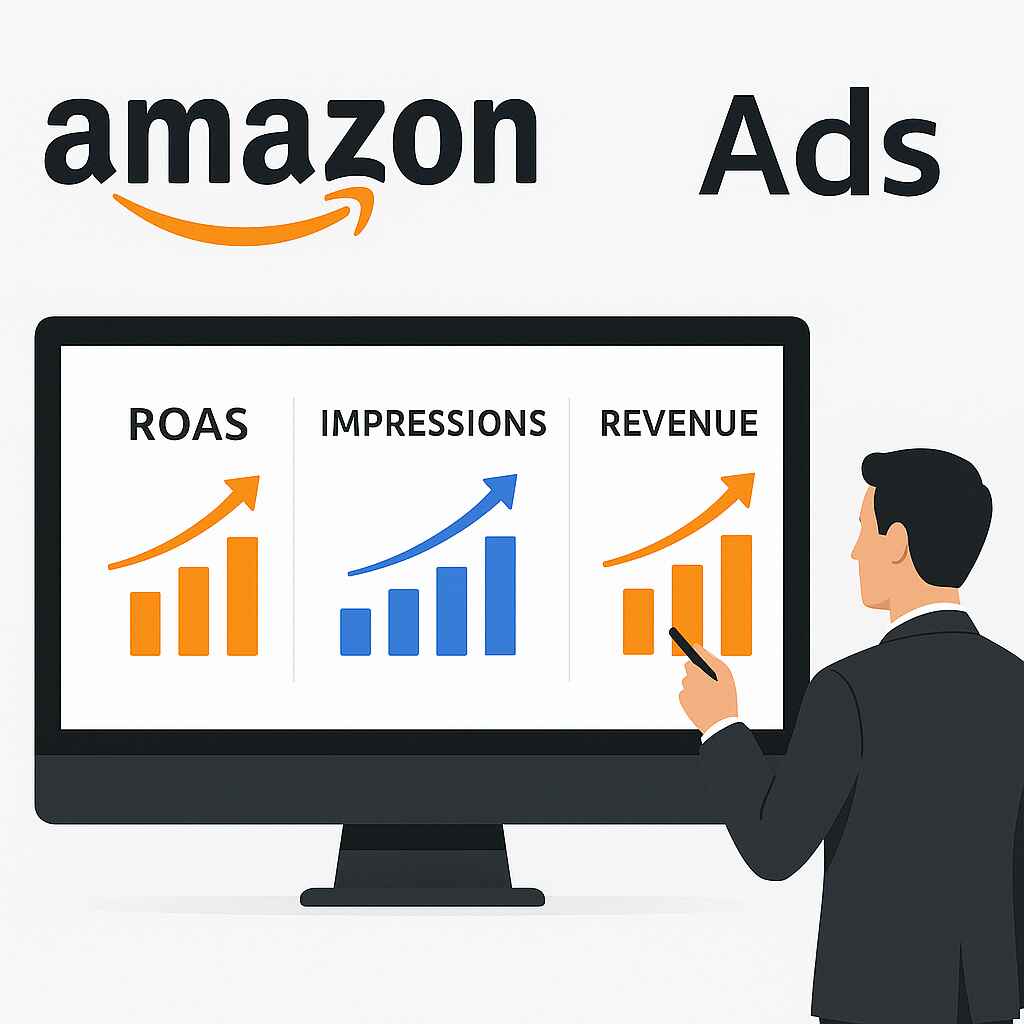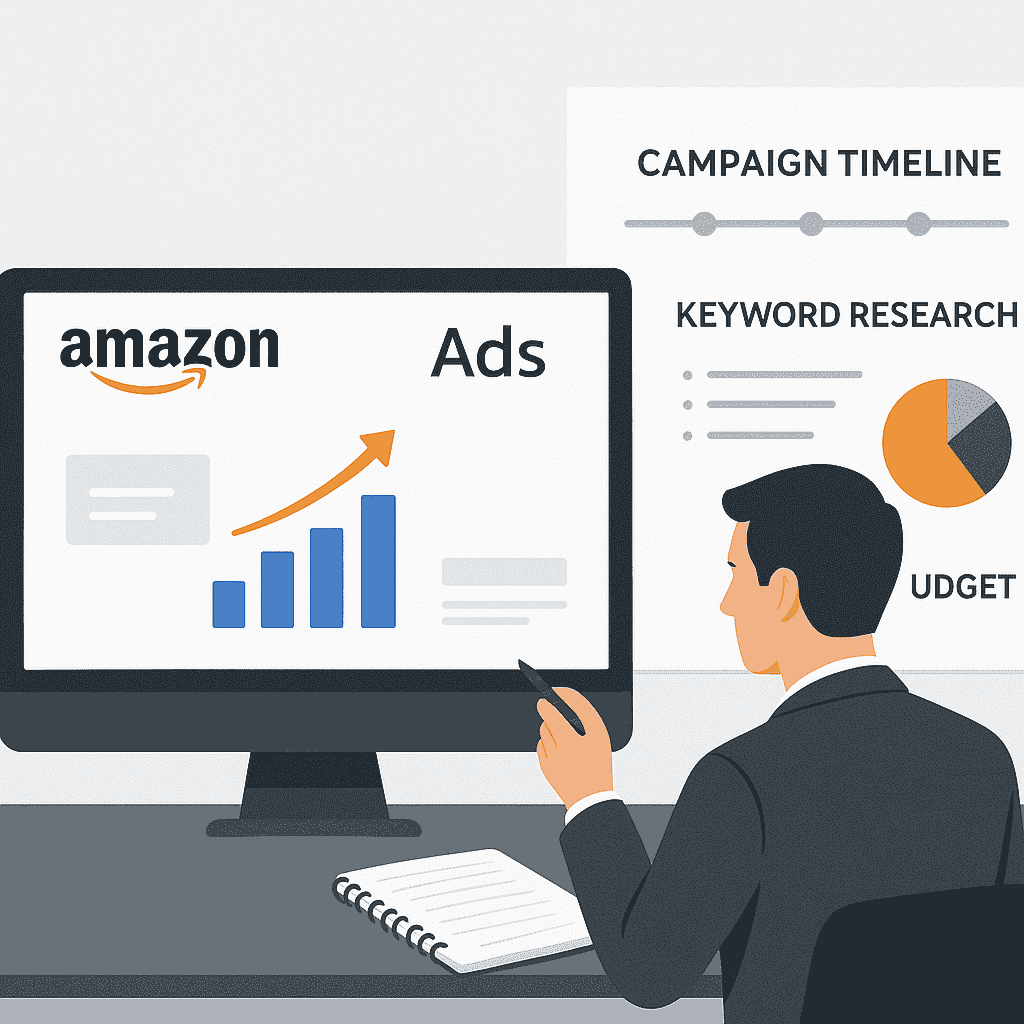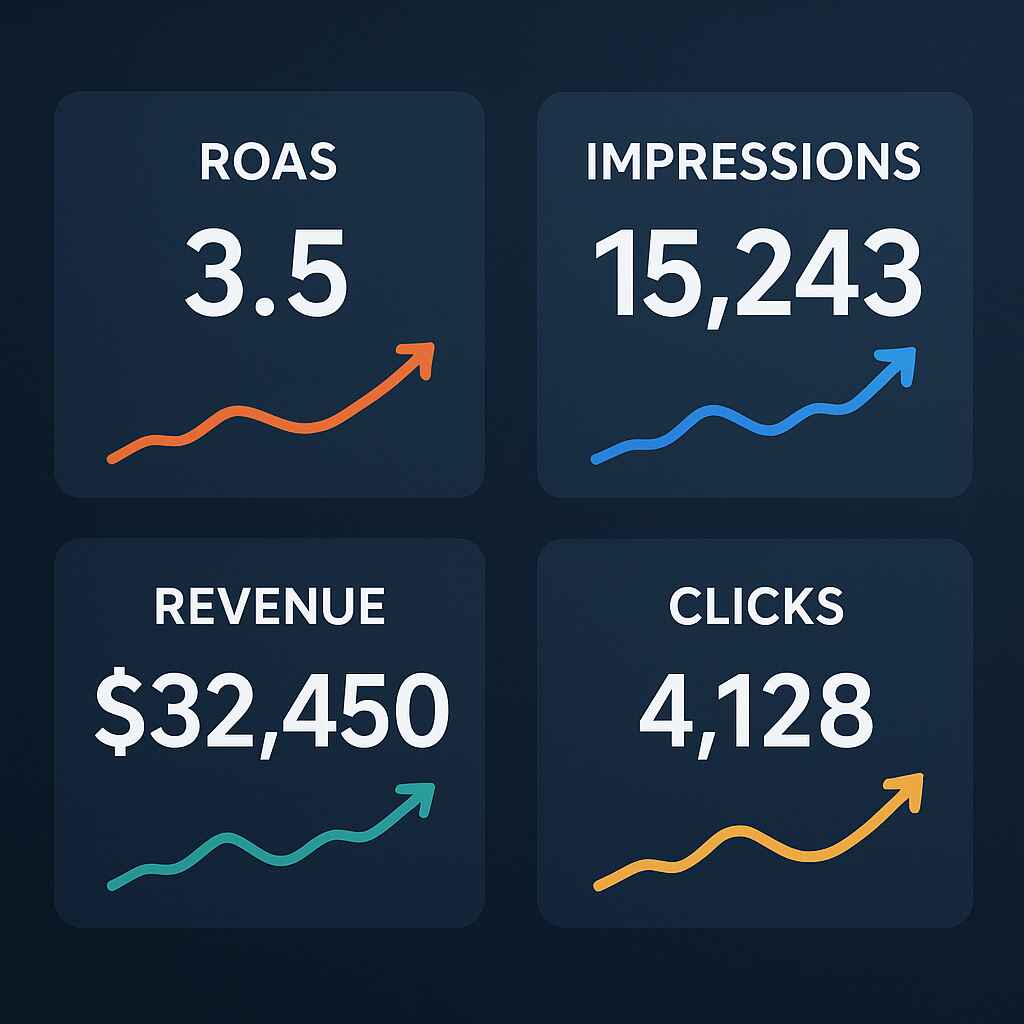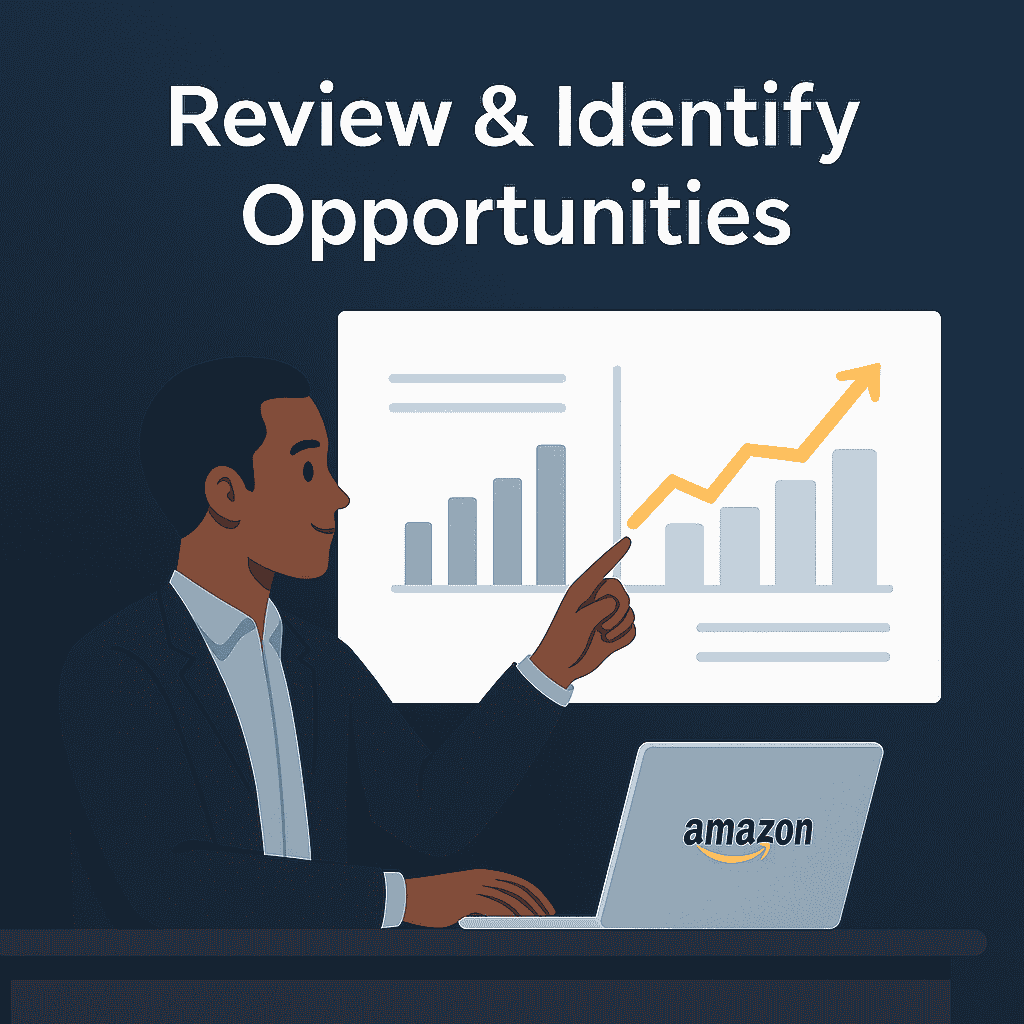Amazon AMS Crucial For Success
Amazon Marketing Services (AMS) isn’t just a siphon for your advertising budget, it’s the lifeline that keeps brands visible, relevant, and competitive in the world’s largest online marketplace.
Millions of products competing for visibility, simply listing your product range on Amazon isn’t enough anymore!
AMS provides the tools to put your brand in front of ready-to-buy customers, dominate search results, and outpace competition who are more reliant on organic visibility.
In today’s Amazon eCommerce landscapes, it’s not a luxury; it’s a necessity for anyone serious about winning on Amazon.

Do Your Research & Come to a Realistic Starting Point

Before you spend a penny on Amazon Ads, take the time to understand your market, your competition, and the demand for your product.
Look at search volumes, analyse your competitors listings and ad placements, and identify where your brand can stand out.
This groundwork will stop you from chasing unrealistic targets and burning through your budget too quickly or setting up for disaster.
Instead, you’ll be able to set goals that are ambitious but achievable, whether that’s dominating a specific keyword and variants, pushing for a spot in the ‘Sponsored’ results for your category, or simply sales by a set percentage over a defined period.
Once those goals are in place, you’ll need to decide exactly which metrics will prove you’re on the right track.
Define Your Metrics That Matter
Start by creating a clear priority list of the metrics that will guide your decisions:
-
Revenue: The most direct measure of success. If your campaigns aren’t generating sales, they’re not delivering tangible results.
-
ROAS (Return on Ad Spend): Tells you how much revenue you’re earning for every pound spent on ads, helping you measure efficiency.
-
ACOS (Advertising Cost of Sales): The percentage of sales spent on ads, useful for keeping profitability in check.
-
Impressions: Shows how often your ads are displayed, helping you gauge visibility and reach within Amazon search results.
-
Clicks: Tracks engagement by showing how many people were interested enough to visit your product listing from the ad.
It might sound straightforward, more conversions mean more revenue, provided you stay profitable, but strategies evolve. Once you’ve mastered the basics, you will likely shift focus to visibility-driven campaigns that don’t just aim for immediate sales, but indirectly improve organic rankings, strengthen brand presence, and create a ripple effect across your entire product portfolio.

Choose Your Placements Wisely

When planning your Amazon Ads strategy, understanding the intent behind each ad type is key to allocating budget effectively:
- Sponsored Products (SP) – Primarily designed for conversions. These ads target shoppers actively searching for products, making them ideal for driving immediate sales.
- Sponsored Brands (SB) – Serve a dual purpose: conversions and brand exposure. They help capture valuable search real estate at the top of search results while also building brand recognition.
- Sponsored Display (SD) – Focused on exposure on competitor or complementary products. These ads retarget or reach audiences browsing related items, making them great for keeping your brand in front of relevant shoppers.
- Video Ads – Primarily aimed at brand awareness. They engage shoppers through rich storytelling, educating them about your products or brand while building familiarity.
-
Review & Identify Opportunities
Once your campaigns are live, the key to scaling is regularly reviewing performance and identifying where you can improve. Start by looking at metrics like ACoS, ROAS, click-through rates, and impressions. Ask yourself:
-
Which campaigns are driving the most conversions at an efficient cost?
-
Where is your brand being underexposed despite strong product appeal?
-
Are there competitor products or high-traffic keywords you’re missing out on?
-
Which audiences or placements are generating clicks but not sales—and why?
By systematically analysing these insights, you can reallocate budget, refine targeting, and test new creative. Every review session should uncover at least one actionable opportunity—whether it’s adding high-performing keywords, expanding into new placements, or tweaking ad creative to boost engagement.

Consider Bringing in a Professional

Running Amazon Ads to the highest standard isn’t just about setting up campaigns—it requires time, skill, and strategic insight. The real game-changer is having a partner who doesn’t just follow trends but leads marketing innovation.
Working with a professional means you can:
-
Stay ahead of changes in Amazon’s advertising ecosystem.
-
Optimise campaigns with precision to maximise ROI.
-
Free up your time while ensuring your ads are strategically aligned with growth goals.
If you want your Amazon strategy to truly outperform, sometimes the smartest move is to bring in someone who knows how to turn data into action and ideas into results.
Get In Touch
